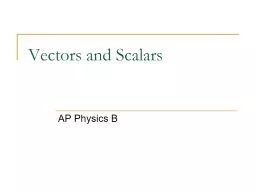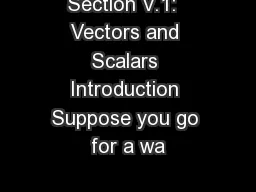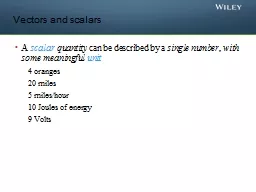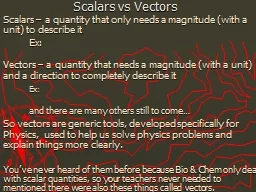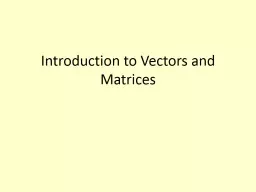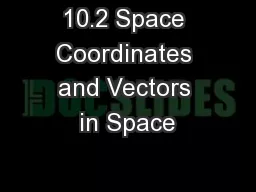PPT-Vectors and Scalars AP Physics B
Author : cheryl-pisano | Published Date : 2018-03-08
Scalar A SCALAR is ANY quantity in physics that has MAGNITUDE but NOT a direction associated with it Magnitude A numerical value with units Scalar Example Magnitude
Presentation Embed Code
Download Presentation
Download Presentation The PPT/PDF document "Vectors and Scalars AP Physics B" is the property of its rightful owner. Permission is granted to download and print the materials on this website for personal, non-commercial use only, and to display it on your personal computer provided you do not modify the materials and that you retain all copyright notices contained in the materials. By downloading content from our website, you accept the terms of this agreement.
Vectors and Scalars AP Physics B: Transcript
Download Rules Of Document
"Vectors and Scalars AP Physics B"The content belongs to its owner. You may download and print it for personal use, without modification, and keep all copyright notices. By downloading, you agree to these terms.
Related Documents

